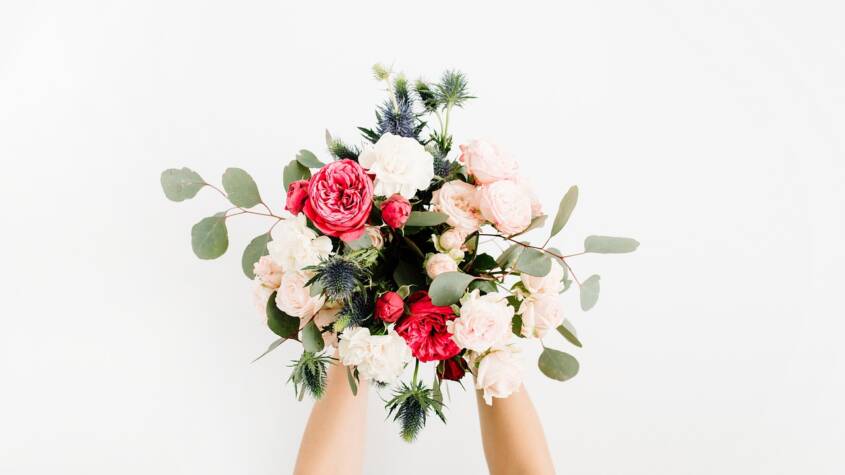
A baby breath bouquet offers a delicate and versatile floral arrangement known for its small, white, cloud-like blooms. It is frequently used to complement other flowers or as a simple, elegant bouquet on its own. Baby breath symbolizes purity and innocence, making it popular for weddings, celebrations, and meaningful gifts.
Its light and airy appearance adds texture without overwhelming an arrangement, allowing for a soft, romantic feel. Many choose baby breath bouquets because they are affordable, long-lasting, and easy to style in various settings.
Understanding the qualities and uses of baby breath can help anyone decide if this bouquet suits their occasion or aesthetic preference. Its timeless charm continues to make it a favorite in floral design.
What Is a Baby Breath Bouquet?
A baby breath bouquet features delicate clusters of small white or pale pink flowers. These blooms are lightweight and airy, creating a soft, cloud-like appearance. The bouquet is simple yet versatile, often used alone or to complement other flowers.
Types of Baby Breath Flowers
Baby breath belongs to the Gypsophila genus, with several species cultivated for floral use. The two most common types are Gypsophila paniculata and Gypsophila elegans.
Gypsophila paniculata has tiny star-shaped flowers arranged in loose sprays. It is the species most frequently seen in bouquets.
Gypsophila elegans is a smaller variety with more compact flower clusters, often used for detailed arrangements.
Colors mostly range from pure white to light pink. The flowers have a delicate texture and long-lasting freshness, making them popular in both fresh and dried arrangements.
Symbolism and Meaning
Baby breath traditionally symbolizes purity, innocence, and everlasting love. Its delicate and light nature reflects gentleness and sincerity.
It is often associated with weddings and new beginnings because of these qualities. The flower also represents connection and trust, which makes it a meaningful addition to romantic or family-related bouquets.
Its subtle but elegant presence enhances emotional expressions in floral gifts without overwhelming other flowers or the message.
Popularity in Floral Arrangements
Baby breath is widely used for its versatility and affordability. It acts as a filler flower, providing volume and contrast to larger blooms.
Florists use it in wedding bouquets, corsages, centerpieces, and boutonnieres. Its neutral colors blend well with almost any flower type or theme style.
Beyond fresh floral arrangements, baby breath is favored for dried flower crafts due to its ability to retain shape and color. This durability extends its use in home decor and keepsakes.
How to Choose and Care for Baby Breath Bouquets
Choosing and caring for baby breath involves attention to freshness, proper arrangement techniques, and steps to extend their life. Each phase affects the bouquet’s appearance and durability.
Selecting Fresh Baby Breath
Fresh baby breath features firm stems and full, puffed flower clusters. The flowers should display a consistent white or soft pink hue without any brown spots or wilting petals.
Leaves should look green and healthy with no yellowing or signs of damage. Avoid bouquets with drooping stems, as this indicates age or poor handling.
It is best to buy baby breath from reputable florists or markets with good turnover to ensure freshness. Check the smell; it should be mild rather than sour or musty, which could signal decay.
Arranging a Baby Breath Bouquet
Before arranging, trim 1-2 inches off each stem at a 45-degree angle under running water. This increases water absorption.
Remove any leaves below the waterline to prevent bacterial growth. Baby breath’s light texture pairs well with other flowers but can hold interest on its own when clustered tightly.
Use floral wire or tape to secure stems if needed, especially for denser or taller bouquets. Place the bouquet in clean, fresh water immediately after arranging.
Preservation and Longevity
Change water every two days to maintain freshness. Recut stems slightly when changing water to improve water uptake.
Keep bouquets away from direct sunlight, drafts, and ripening fruits, which release ethylene gas that shortens flower life. Mist the flowers lightly to maintain humidity without soaking them.
For extended preservation, baby breath can be dried by hanging upside down in a dark, dry, well-ventilated area. This maintains shape and color for months if done properly.
Kids Swimming Lessons Essential Tips for Safety and Skill Development
Kids swimming lessons teach essential water safety skills and build confidence in the wate…








